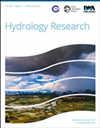基于Budyko框架的黄河中游主要支流径流变化贡献度和空间差异分解
IF 2.4
4区 环境科学与生态学
Q2 Environmental Science
引用次数: 0
摘要
气候和人类活动对径流的定量区分对水资源管理和未来水资源趋势预测具有重要意义。近年来,黄河中游地区径流量急剧下降。许多研究分析了径流减少的原因,但对径流贡献的空间差异及其原因仍缺乏了解。因此,本研究基于Budyko框架,定量区分了气候和人类活动对湄公河流域9个子流域径流变化的贡献,并分析了不同流域贡献的差异及其原因。结果表明,9个子流域径流量明显减少,降水量由西北向东南增加。人类活动对径流量的贡献大于气候变化,尤其是皇甫川(HF)河和库耶(KY)河流域,人类活动对径流的贡献超过90%。HF河和KY河人类活动的影响更大,是因为与其他地区相比,用水增长率和归一化植被指数趋势显著更高。本文章由计算机程序翻译,如有差异,请以英文原文为准。
Decomposition of contribution to runoff changes and spatial differences of major tributaries in the middle reaches of the Yellow River based on the Budyko framework
Quantitative differentiation of climate and human activities on runoff is important for water resources management and future water resources trend prediction. In recent years, runoff in the middle reaches of the Yellow River (MRYR) has decreased dramatically. Many studies have analyzed the causes of runoff reduction, but there is still a lack of understanding of the spatial differences in runoff contributions and their causes. Therefore, this study quantitatively distinguishes the contributions of climate and human activities to runoff changes in nine sub-basins of the MRYR based on the Budyko framework and analyses the differences in the contributions of different basins and their causes. The results show that the runoff in the nine sub-basins decreases significantly and the precipitation increases from northwest to southeast. The contribution of human activities to runoff is greater than that of climate change, especially in the Huangfuchuan (HF) River and Kuye (KY) River basins, where the contribution of human activities to runoff exceeds 90%. The greater impact of human activities in HF River and KY River is due to the significantly higher water use growth rate and normalized vegetation index trends than in other areas.
求助全文
通过发布文献求助,成功后即可免费获取论文全文。
去求助
来源期刊

Hydrology Research
Environmental Science-Water Science and Technology
CiteScore
5.30
自引率
7.40%
发文量
70
审稿时长
17 weeks
期刊介绍:
Hydrology Research provides international coverage on all aspects of hydrology in its widest sense, and welcomes the submission of papers from across the subject. While emphasis is placed on studies of the hydrological cycle, the Journal also covers the physics and chemistry of water. Hydrology Research is intended to be a link between basic hydrological research and the practical application of scientific results within the broad field of water management.
 求助内容:
求助内容: 应助结果提醒方式:
应助结果提醒方式:


